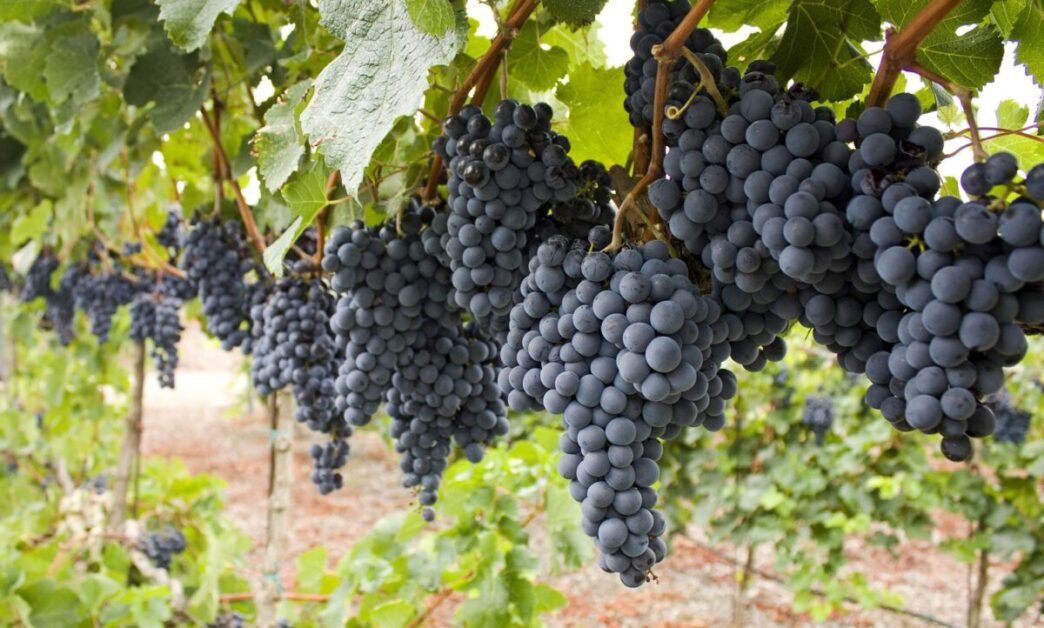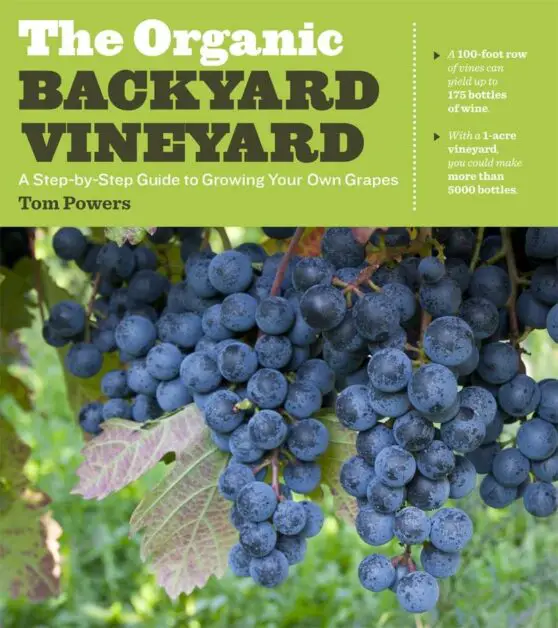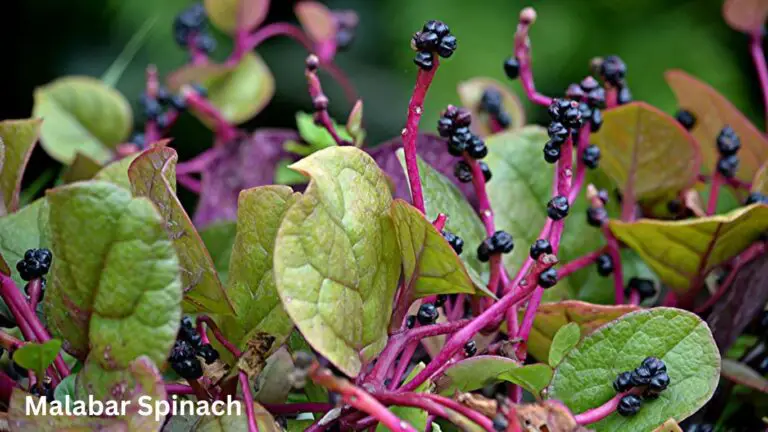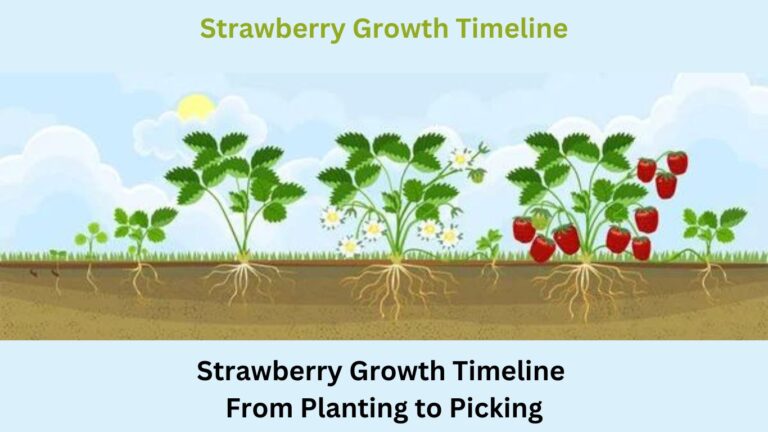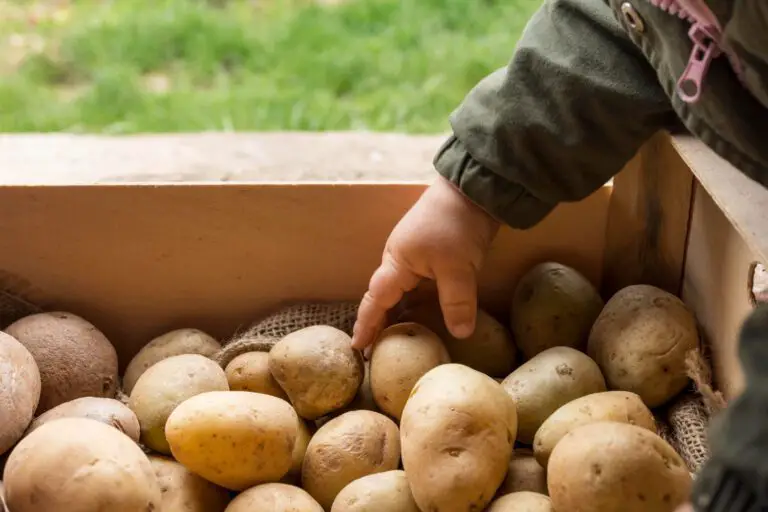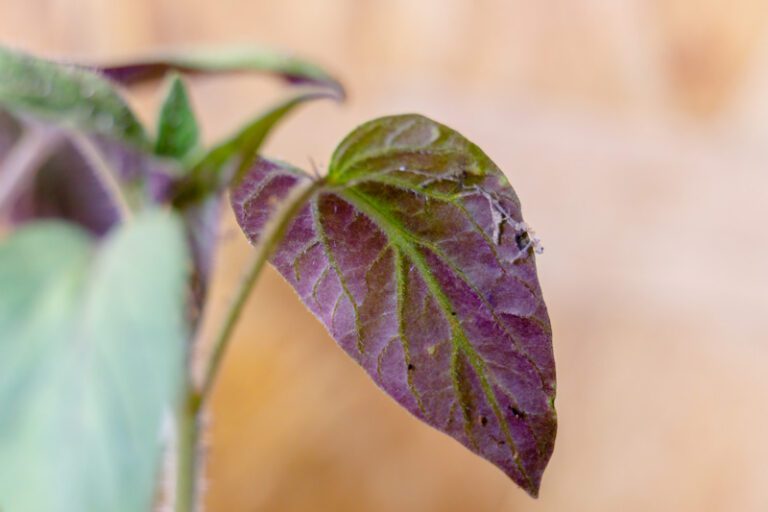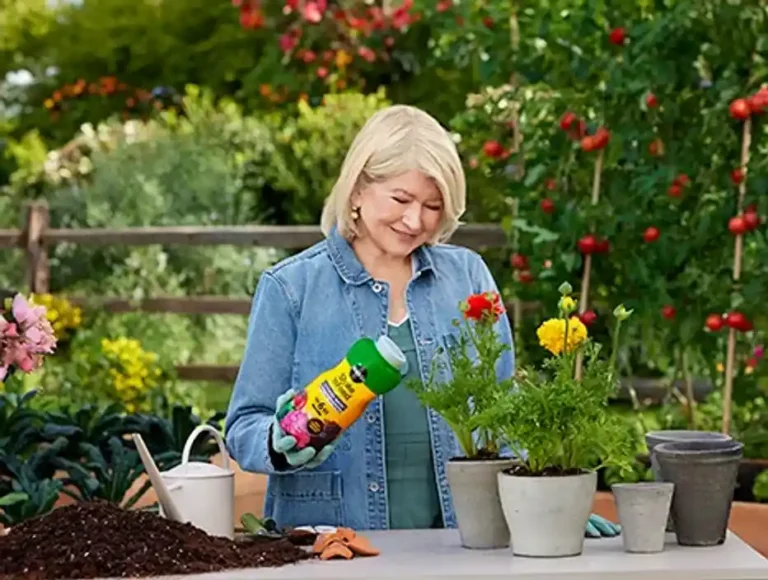Growing Grapes: Getting Huge Harvests Of Fruit
Did you know that with the right techniques, you can grow grapes in your own backyard that yield bountiful harvests? It’s true! Grapes are not only delicious, but they’re also packed with nutrients and can be used to make wine, jellies, and other tasty treats.
If you’re interested in growing grapes, you’ve come to the right place. In this blog, we’ll explore everything you need to know to get started, from selecting the right grape varieties to planting and caring for your vines. We’ll also share tips and tricks for maximizing your harvest and ensuring your grapes are healthy and flavorful.
Our author is an experienced gardener and horticulturist who has been growing grapes for over a decade. They have a wealth of knowledge and expertise in this area, and they’re excited to share their insights with you.
So whether you’re a seasoned gardener or just starting out, this blog is a must-read for anyone interested in growing grapes. Get ready to roll up your sleeves and start growing your own delicious, nutritious fruit!
Table of Contents
Selecting the Right Grape Varieties for Abundant Fruit Production
When it comes to selecting the right grape varieties for abundant fruit production, several factors need to be taken into consideration. One of the most important factors is the climate in which the grapes will be grown. Different grape varieties thrive in different climate conditions, so it is essential to choose varieties that are well-suited to your specific region.
| Grape Variety | Advantages | Disadvantages | Characteristics |
|---|---|---|---|
| Concord | – High yield | – Susceptible to diseases and pests | – Blue-black color |
| – Strong grape flavor | – Thick skins, which may not appeal to all | – Typically used for juices and jellies | |
| Thompson Seedless | – High productivity | – Requires consistent pruning and training | – Green to pale yellow color |
| – Versatile usage (fresh eating, raisins) | – Susceptible to powdery mildew | – Sweet, mild flavor | |
| – Commonly used in dried fruit production | |||
| Cabernet Sauvignon | – Consistent yields | – Requires specific climate and soil conditions | – Small, thick-skinned berries |
| – High market demand | – Prone to fungal diseases like mildew and botrytis | – Deep red color | |
| – Long aging potential | – Produces full-bodied, complex wines | ||
| Chardonnay | – Reliable fruit set | – Vulnerable to frost damage during bud break | – Green to golden-yellow color |
| – Versatile usage in winemaking | – Susceptible to downy mildew and powdery mildew | – Neutral flavor with notes of apple and citrus | |
| – Commonly used for white wine production |
Additionally, selecting grape varieties that have a proven track record of high yields can increase the likelihood of abundant fruit production. Consulting with local grape growers, nurseries, or agricultural extension offices can provide valuable insights into the disease resistance and yield potential of different grape varieties.
Understanding the Ideal Climate and Soil Conditions for Grape Cultivation
Grapes are a culturally and economically significant fruit crop that thrives in specific climate and soil conditions. Understanding the ideal climate and soil conditions for grape cultivation is crucial for gardening enthusiasts seeking abundant fruit production.
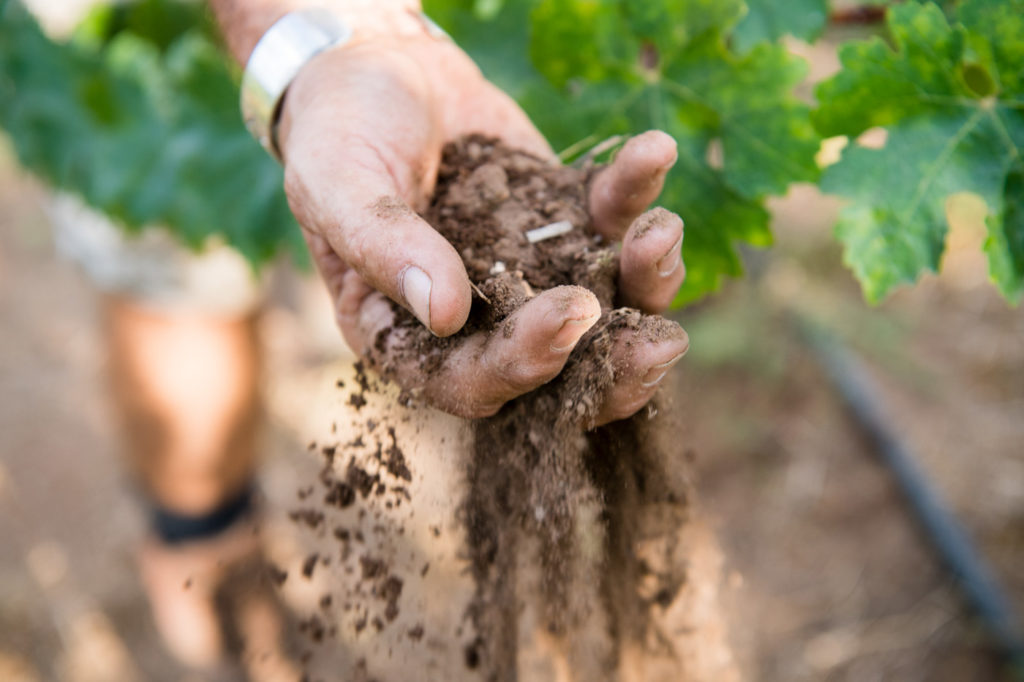
- When it comes to climate, grapes prefer regions with a moderate Mediterranean-like climate. Ideally, they thrive in areas with long, warm growing seasons and mild winters.
- A minimum of 150 frost-free days is necessary for grapevines to develop and produce fruit successfully.
- Temperature extremes can negatively impact grape cultivation, with excessively hot temperatures leading to sunburned grapes and excessively cold temperatures damaging the vines.
- In addition to climate, soil conditions play an equally important role in the successful cultivation of grapes.
- Grapes prefer well-draining soils with a pH level ranging from 5.5 to 7.0.
- Sandy loam and loam soils are typically considered ideal for grapevine growth, as they promote both water drainage and nutrient availability.
- These types of soils prevent waterlogging, which can lead to root rot and other diseases.
- It is also essential to note that different grape varieties may have specific soil preferences, so it is crucial to research and select the appropriate varieties for the specific soil conditions in your area of cultivation.
“The Organic Backyard Vineyard” has been an invaluable resource in my journey to cultivate grapes sustainably. Its comprehensive approach and practical advice have equipped me with the knowledge and confidence to successfully grow grapes in my backyard. The book’s emphasis on organic practices, coupled with its beautiful illustrations and variety selection guidance, has made the process both educational and enjoyable. While it may be overwhelming for beginners at times, its troubleshooting sections offer valuable solutions to common challenges. Overall, this book serves as an essential companion for anyone looking to embark on or enhance their grape-growing adventure.
✅ Organic Practices: The book emphasizes organic and sustainable practices, providing guidance on natural methods for pest and disease control, soil management, and vineyard maintenance.
✅ Practical Advice: Readers appreciate the practical advice and real-world tips offered throughout the book, which are based on the author’s extensive experience in grape growing.
✅ Beautifully Illustrated: With stunning photographs and illustrations, the book enhances understanding of key concepts and techniques, making it visually engaging and informative.
✅ Variety Selection: The book covers various grape varieties, helping readers choose the right types for their climate, soil conditions, and desired wine or table grape preferences.
✅ Troubleshooting: “The Organic Backyard Vineyard” includes troubleshooting sections that address common challenges and issues faced by grape growers, providing solutions and guidance for overcoming them effectively.
❌ Regional Specificity: While the book offers general guidance applicable to many regions, it may lack specific information tailored to certain climates, soils, or grape varieties found in particular geographic areas.
❌ Complexity: The detailed information provided in the book may be overwhelming for beginners, requiring careful reading and comprehension to fully grasp the concepts and techniques presented.
❌ Lack of Updates: Depending on the publication date, the book may not include the latest advancements or trends in grape growing practices, potentially making some information outdated.
❌ Technical Language: Parts of the book may contain technical terminology or jargon that could be challenging for novice growers to understand without prior knowledge or additional research.
❌ Additional Resources Needed: While the book serves as a valuable starting point, readers may need to supplement their knowledge with other resources, such as online forums, workshops, or local extension services, for a more comprehensive understanding of grape cultivation.
Preparing and Planting the Grapevines for Optimal Growth and Yield
Preparing and planting grapevines are crucial steps in ensuring optimal growth and yield. Prior to planting, it is essential to select the right variety of grape that is suited for your specific growing conditions and desired outcomes. Factors such as climate, soil type, disease resistance, and intended use of the grapes should be carefully considered.
Select well-draining soil with a pH level between 6 and 7.
Conduct a soil analysis to determine nutrient composition and pH level.
Amend soil as necessary based on soil analysis results.
Remove weeds and unwanted vegetation to reduce competition for nutrients.
Dig a hole deep and wide enough to accommodate the vine’s root system without bending or breaking roots.
Gently spread out the roots in the hole and backfill with soil.
Ensure the vine is planted at the same depth as it was in the nursery or pot.
Firmly pack the soil around the rootball to eliminate air pockets and provide stability.
Install trellises, stakes, or other support structures to guide the young vine’s growth.
Choose the appropriate training system based on vineyard goals and conditions.
Proper spacing between vines ensures adequate airflow and sunlight penetration.
Reduce the risk of disease and promote optimal fruit production.
Follow recommended spacing guidelines based on grape variety and training system.
In the next section, we will delve into pruning techniques that maximize the fruitfulness of grapevines, an essential practice for grapevine management. Stay tuned to discover how strategic pruning can help optimize your grape harvest.
Pruning Techniques to Maximize the Fruitfulness of Grapevines
Pruning is an essential technique for maximizing the fruitfulness of grapevines. By selectively removing certain branches and shoots, we can achieve better airflow and sunlight penetration, leading to healthier and more productive vines. However, it’s crucial to approach pruning with a careful and strategic mindset, as haphazard cuts can harm the vines and diminish their potential for bountiful fruit production.
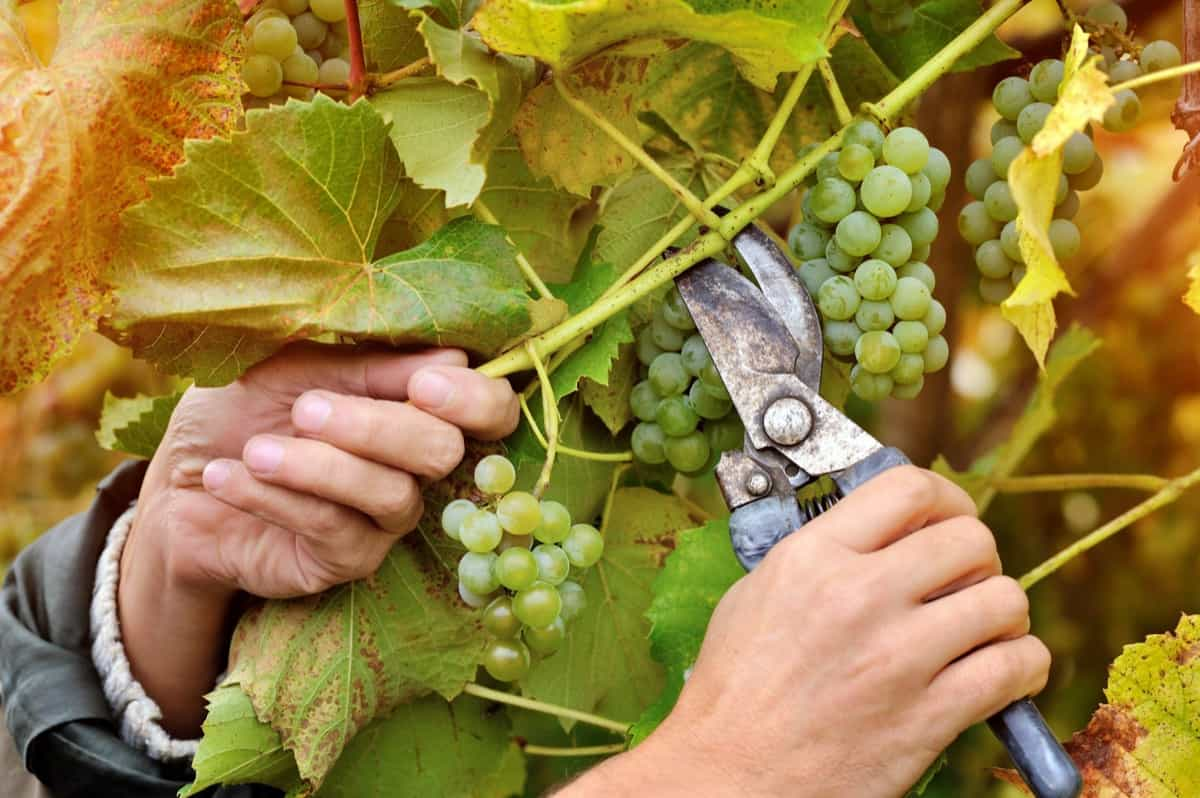
Consider Growth Habit and Structure:
- Evaluate the vine’s growth habit and overall structure before pruning.
- Adopt methods like the “cordon” system, which involves training a permanent horizontal branch along a trellis wire.
- Select strong and well-placed canes for fruiting while removing excess growth to simplify vine structure.
- Ensure proper airflow and easy access for pest management to prevent diseases.
- Types of Pruning Cuts:
- Spur Pruning:
- Leave short spur on the cordon or trunk to produce new shoots and grapes.
- Limit the number of buds on each spur to encourage quality fruit production over excessive growth.
- Cane Pruning:
- Select one or more long canes to bear fruit while removing the rest.
- Requires careful training and support to prevent cane breakage under the weight of the fruit.
- Allows for a higher yield but necessitates attention to training and support.
- Spur Pruning:
- Effectiveness of Pruning Techniques:
- Both spur and cane pruning technique can be effective depending on various factors such as grape variety, environmental conditions, and desired crop load.
- Choose the appropriate pruning method based on vineyard goals and conditions.
In conclusion, pruning is a vital practice for maximizing the fruitfulness of grapevines. By carefully selecting branches and utilizing appropriate pruning cuts, we can shape the vine’s structure, promote better airflow and sunlight exposure, and direct the vine’s energy towards producing quality fruit. However, it’s important to approach pruning with knowledge and precision, understanding the vine’s growth habits and using proper techniques for optimal results.
With the right pruning practices in place, we can enhance the productivity and overall health of grapevines, ultimately leading to abundant and delicious fruit harvests.
Implementing Effective Pest and Disease Management Strategies for Healthy Grapevines
Implementing effective pest and disease management strategies is crucial for maintaining healthy grapevines and ensuring optimum fruit production. Grapes are susceptible to a range of pests, including aphids, mites, and grape berry moths, as well as diseases such as powdery mildew and downy mildew. These pests and diseases can have a detrimental impact on vine health and yield if left unchecked, making it necessary to employ proactive management techniques.
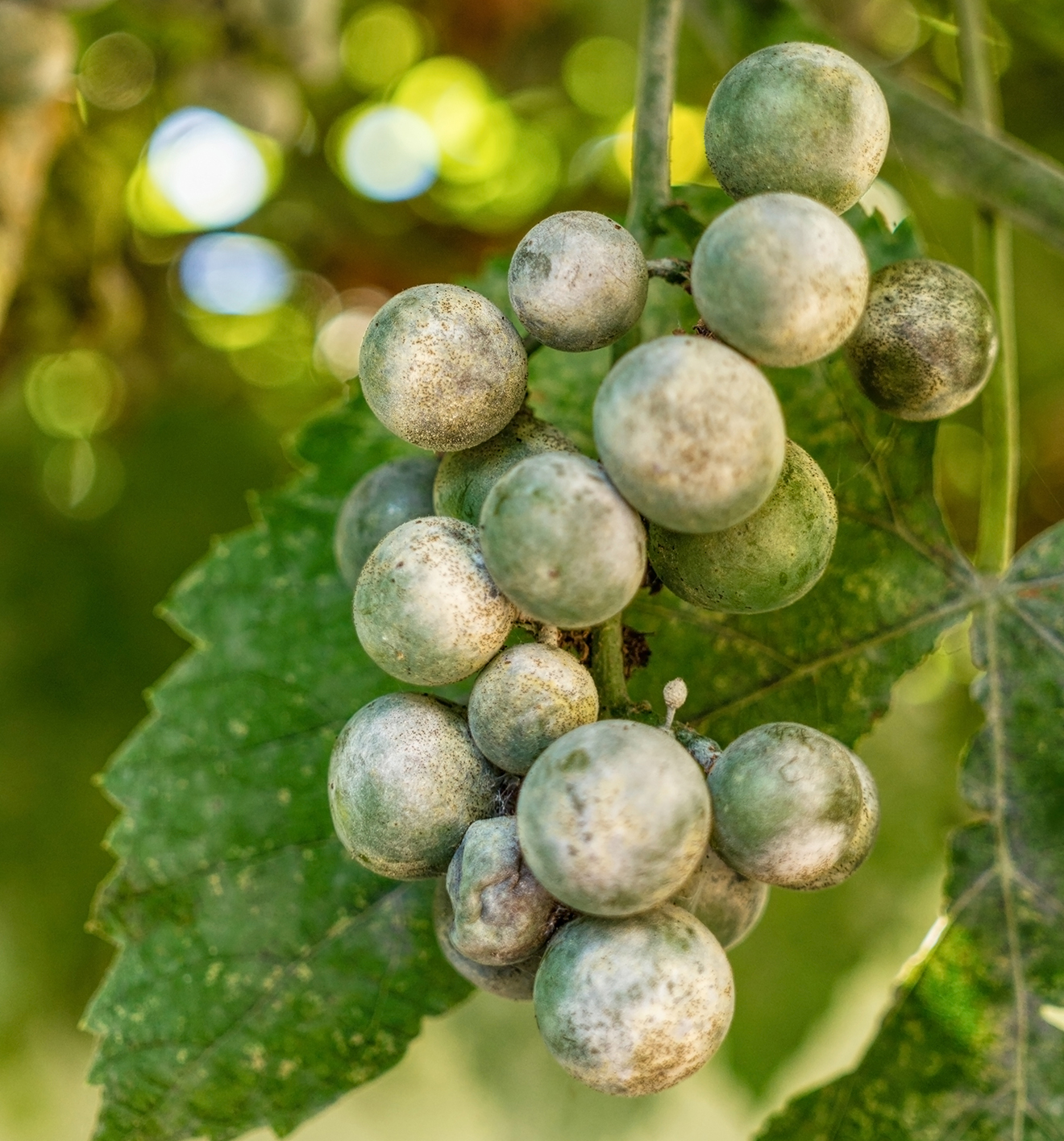
Implement Integrated Pest Management (IPM):
- Utilize a holistic approach that combines cultural, biological, and chemical control methods.
- Cultural practices like proper pruning and spacing between vines can reduce pest and disease pressure.
Biological Control:
- Introduce natural predators such as ladybugs and lacewings into the vineyard to control pest populations naturally.
Chemical Control:
- Use pesticides judiciously and follow recommended guidelines when chemical control is necessary.
- Regularly monitor pest populations and disease symptoms to determine the right timing and type of pesticide application.
Prevent Resistance and Environmental Impact:
- Minimize the risk of resistance development and environmental impact by applying pesticides appropriately.
- Seek guidance from agricultural extension agents or grape consultants for region-specific pest and disease management strategies tailored to your vineyard conditions.
By implementing effective pest and disease management strategies, grape growers can ensure the health and vitality of their vineyards, leading to abundant fruit production and high-quality grapes for winemaking or table consumption. With careful planning, diligent monitoring, and proactive action, the risks posed by pests and diseases can be minimized, allowing grapevines to thrive and produce bountiful harvests.
Essential Nutritional Requirements for Grapes: Fertilization and Irrigation Practices
To achieve abundant fruit production in grapevines, it is crucial to provide them with essential nutritional requirements through proper fertilization and irrigation practices. Fertilization plays a vital role in supplying the necessary nutrients that grapevines need to thrive and produce high-quality fruit. Before applying fertilizers, it is advisable to conduct soil tests to determine the specific nutrient deficiencies in your vineyard. This will help you tailor your fertilization approach to address those deficiencies effectively.
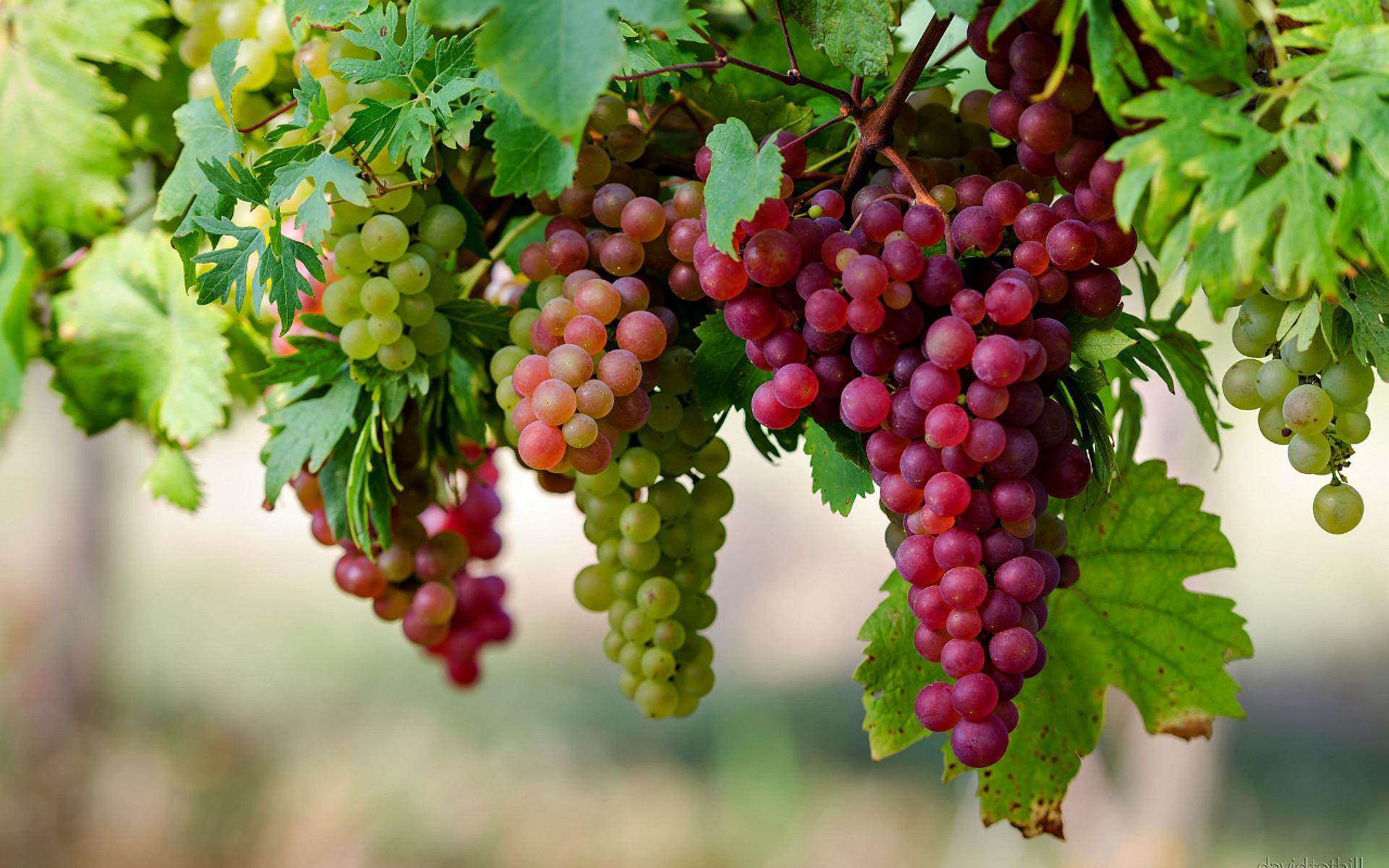
Conduct Soil Tests:
- Before fertilizing grapevines, conduct soil tests to identify specific nutrient deficiencies in the vineyard.
Balanced Fertilization:
- Use fertilizers with a balanced NPK ratio to provide essential nutrients without causing excessive vegetative growth.
- Ensure grapevines receive micronutrients like iron, zinc, and manganese through foliar sprays or soil amendments.
Regular Monitoring:
- Monitor the vineyard’s nutrient levels regularly and adjust fertilization practices as needed to optimize grapevine health and fruit production.
Proper Irrigation:
- Grapevines have specific water requirements during key growth stages like bud break, flowering, fruit set, and veraison.
- Implement an efficient irrigation system, such as drip irrigation, to deliver water directly to the root zones and maintain consistent moisture level.
Soil Moisture Monitoring:
- Regularly monitor soil moisture levels and adjust irrigation based on factors like soil type, weather conditions, and grapevine age to ensure successful grape cultivation.
The following table explains the nutritional requirements for grapes:
| Nutrient | Fertilization Rate | Irrigation Practices |
|---|---|---|
| Nitrogen (N) | 1-1.5 lbs per vine annually | Regular watering during dry periods. |
| Phosphorus (P) | 0.5-1 lb per vine annually | Deep, infrequent watering to encourage deep root growth. |
| Potassium (K) | 1-1.5 lbs per vine annually | Moderate irrigation to avoid waterlogging. |
| Calcium (Ca) | 0.5-1 lb per vine annually | Adequate soil moisture throughout the growing season. |
| Magnesium (Mg) | 0.2-0.5 lb per vine annually | Consistent moisture levels, avoiding both drought and waterlogging. |
| Sulfur (S) | 0.2-0.5 lb per vine annually | Regular, deep watering to ensure sulfur uptake. |
| Boron (B) | 0.05-0.1 lb per vine annually | Balanced irrigation to prevent boron leaching. |
Remember, providing grapes with the essential nutrients they need through proper fertilization and irrigation practices is crucial for ensuring optimal growth, yield, and fruit quality. By maintaining a balanced nutrient supply and effectively managing water requirements, you can maximize the potential of your grapevines and enjoy a bountiful harvest.
Having applied Bonide Tomato Blossom Set Spray to my tomato plants, I’ve noticed a significant improvement in fruit production. The easy-to-use foliar spray effectively stimulated flower development, resulting in robust fruit set and enhanced yield. While I appreciated its convenience and potential for increased harvests, I remained mindful of its synthetic hormone composition and the need for precise application timing. Overall, this product proved to be a valuable tool for maximizing tomato crop productivity, particularly when used judiciously alongside proper cultivation practices.
- Blossom Set Spray: Bonide Tomato Blossom Set Spray is specifically formulated to promote fruit set and development in tomato plants, enhancing yield potential.
- Easy Application: The convenient foliar spray application allows for quick and hassle-free use, ensuring thorough coverage of tomato blossoms for maximum effectiveness.
- Increased Fruit Production: By stimulating the natural hormone balance within tomato plants, this spray encourages more prolific flowering and fruiting, leading to higher crop yields.
- Improved Fruit Quality: Promoting fruit set at an early stage can result in larger, healthier tomatoes with better flavor and texture, enhancing overall crop quality.
- Versatile Use: In addition to tomatoes, this spray can also be used on other fruit-bearing plants such as peppers, eggplants, and strawberries, providing flexibility for gardeners with diverse crops.
- Cost-Effective Solution: Investing in a blossom set spray can be a cost-effective way to maximize the productivity of tomato plants, ultimately leading to a greater return on investment at harvest time.
- Environmental Impact: Some users may have concerns about the environmental impact of using synthetic hormones in garden products, particularly in organic gardening practices.
- Timing Sensitivity: Effective use of blossom set sprays requires precise timing during the flowering stage of tomato plants, and failure to apply at the optimal time may reduce effectiveness.
- Potential Overuse: Excessive application of blossom set sprays may lead to overstimulation of fruit set, resulting in crowded clusters of small, poorly developed tomatoes.
- Chemical Residue: There is a risk of chemical residue remaining on treated fruits, which may be a concern for those seeking to minimize exposure to synthetic additives in their food.
- Limited Effectiveness: While blossom set sprays can enhance fruit set under ideal conditions, their effectiveness may vary depending on factors such as weather, soil fertility, and plant health.
Training and Supporting Grapevines for Increased Fruit Production
To achieve increased fruit production in grapevines, proper training and support are crucial. These practices ensure that the vines grow in an organized and efficient manner, allowing for optimal sunlight exposure and air circulation. One effective training method is the use of trellises or pergolas, which provide a structured framework for the vines to grow and allow easy access for pruning and maintenance.
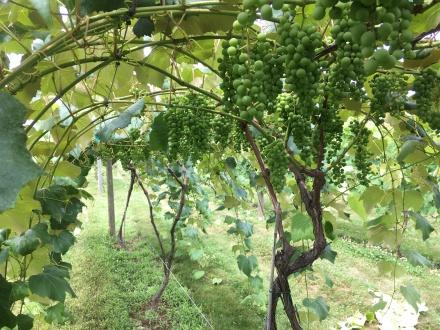
Supporting grapevines is crucial for preventing bending or breaking under the weight of the fruit.
It ensures better distribution of nutrients and water, leading to healthier and more vigorous growth.
Tailor support methods to fit the specific variety and growth habit of the grapes.
Certain training systems like Guyot or Geneva Double Curtain may benefit particular grape varieties.
Adapt training and support techniques to individual vineyard conditions and goals for optimal results.
Utilize sturdy stakes or wires to support grapevines.
Consider training systems like Guyot or Geneva Double Curtain for better vigor and fruit quality.
Customize training and support methods to fit the unique conditions and objectives of the vineyard.
Ensure that support structures are robust enough to withstand the weight of the vines and fruit.
Proper training and supporting methods contribute to increased fruit production in grapevines.
By providing adequate support, gardeners and vineyard owners can optimize fruit yield and quality.
By implementing proper training and support techniques, gardeners and vineyard owners can ensure increased fruit production in their grapevines.
Monitoring and Adjusting Grapevine Canopy for Improved Sunlight Exposure and Air Circulation
Grapevines require proper monitoring and adjustment of their canopy to ensure optimal sunlight exposure and air circulation. Sunlight is crucial for grape production as it provides the energy needed for photosynthesis, which in turn supports fruit development and ripening. Moreover, good air circulation helps minimize the risk of diseases by reducing humidity and promoting the dispersal of pests.
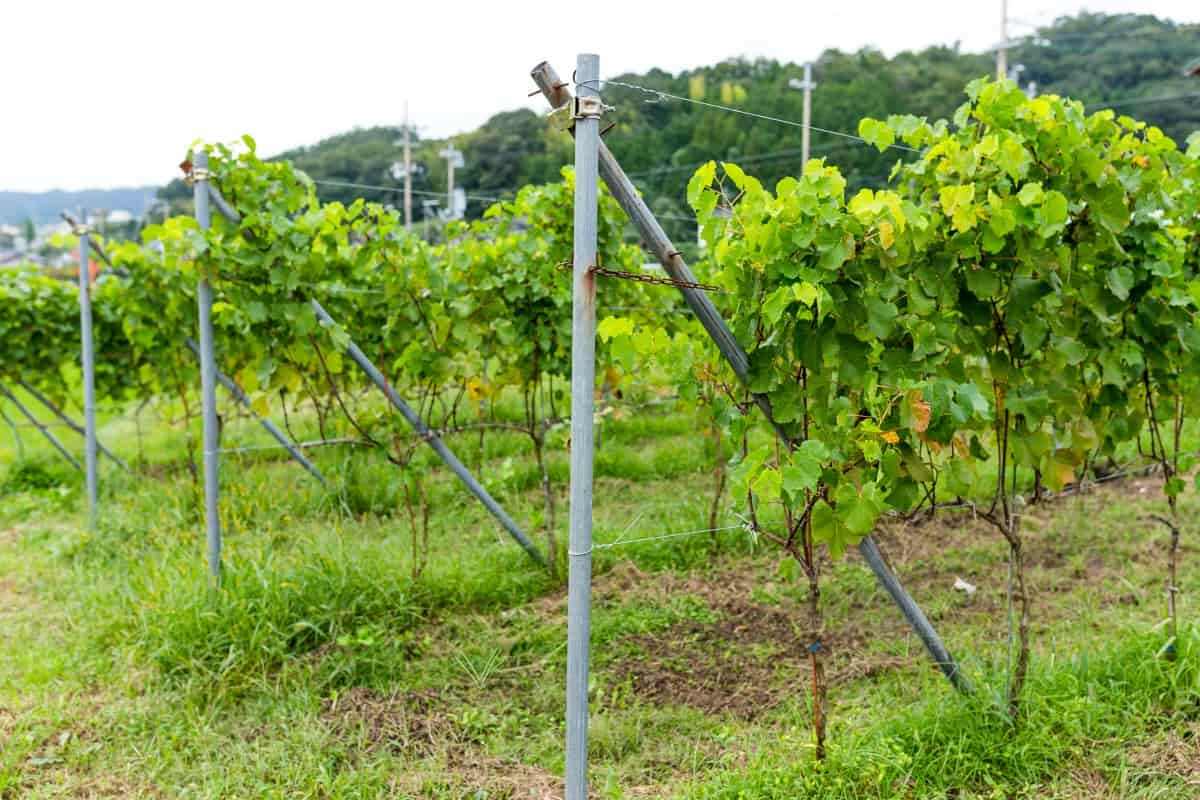
- Regular Assessment of Canopy:
- Visually inspect the grapevine canopy regularly to monitor growth and development.
- Look for signs of shading or unevenness that may indicate areas with inadequate sunlight exposure.
- Pruning for Sunlight Penetration:
- Identify parts of the canopy blocking sunlight, such as excessive lateral shoots.
- Prune these areas to allow better light penetration into the inner parts of the vine.
- Remove excessive leaves around fruit clusters to increase direct sunlight exposure, enhancing fruit quality and sugar accumulation.
- Ensuring Adequate Air Circulation:
- Recognize the importance of proper air circulation within the grapevine canopy.
- Promote air movement to reduce the risk of fungal diseases and aid in leaf drying after rainfall or dew.
- Remove excess foliage or lateral shoots that hinder airflow within the canopy.
- Thin the canopy and maintain a balanced vine structure to enhance air movement throughout the vineyard.
In conclusion, actively monitoring and adjusting the grapevine canopy is vital for promoting optimal sunlight exposure and air circulation. By carefully managing the canopy structure and making timely adjustments, growers can maximize the potential of their grapevines, leading to healthier and more productive grape crops.
Harvesting Techniques for Optimum Ripeness and Flavor in Grapes
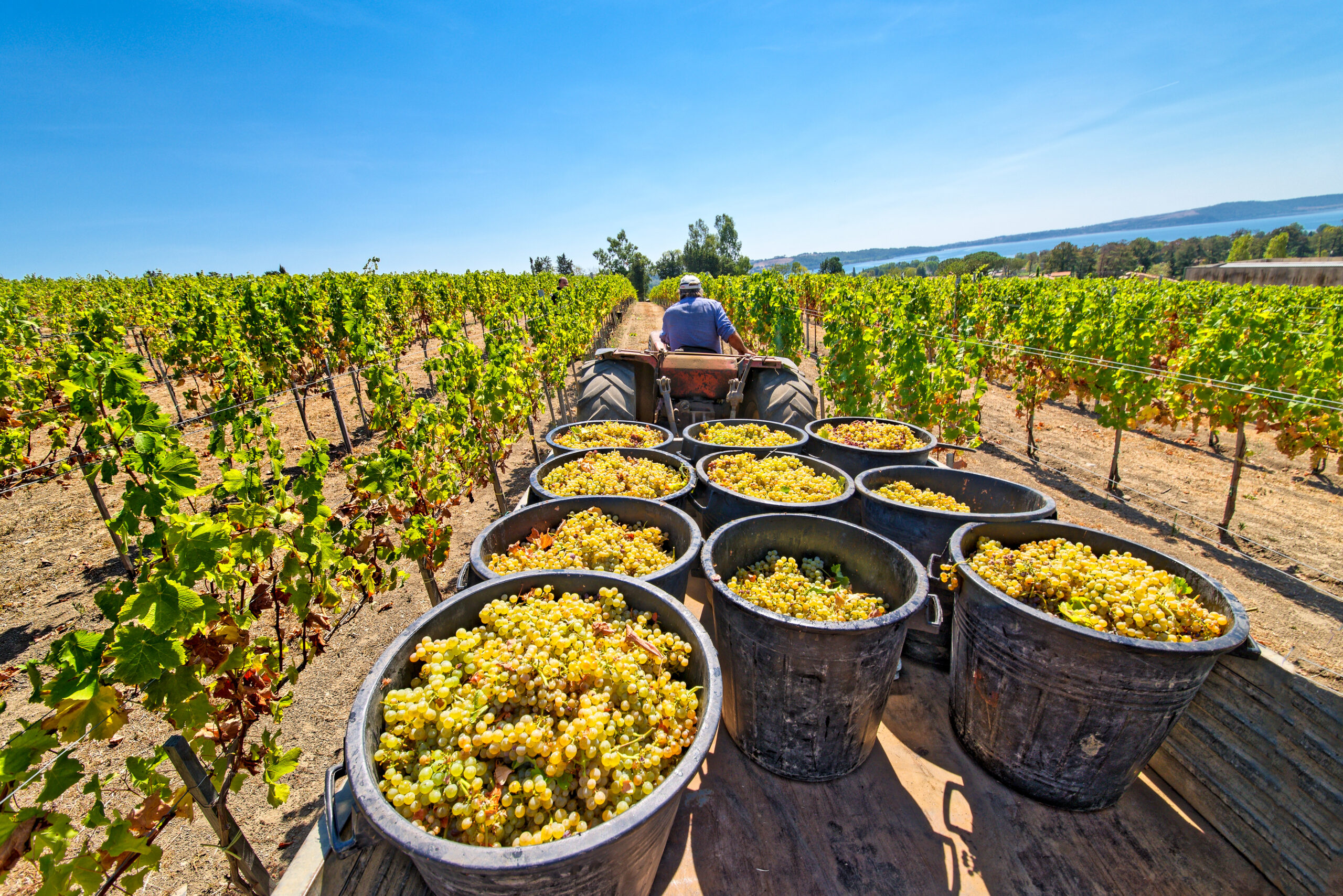
When it comes to harvesting grapes, timing is everything. To achieve optimum ripeness and flavor, it is crucial to harvest the grapes at the right moment.
Sugar Content Measurement:
- Use a refractometer to measure sugar content in grapes, indicated by Brix levels.
- Ideal sugar content typically ranges between 22-24 Brix, but this can vary based on grape variety.
Acidity Assessment:
- Evaluate grape acidity using a pH meter or titration method.
- Grapes with a pH level between 3.2 and 3.6 are generally optimal for harvesting.
Variability in Ripening:
- Different grape varieties have distinct ripening periods.
- Understand the specific characteristics of the grape varieties being cultivated.
Influencing Factors:
- Consider external factors like climate and vineyard management practices that can influence the ripening process.
By carefully monitoring the sugar and acidity levels and considering other ripeness indicators such as color, flavor development, and seed maturity, you can ensure that your grapes are harvested at the peak of their ripeness, resulting in exceptional flavor and quality.
Post-Harvest Care: Storing and Preserving Grapes for Longevity and Quality
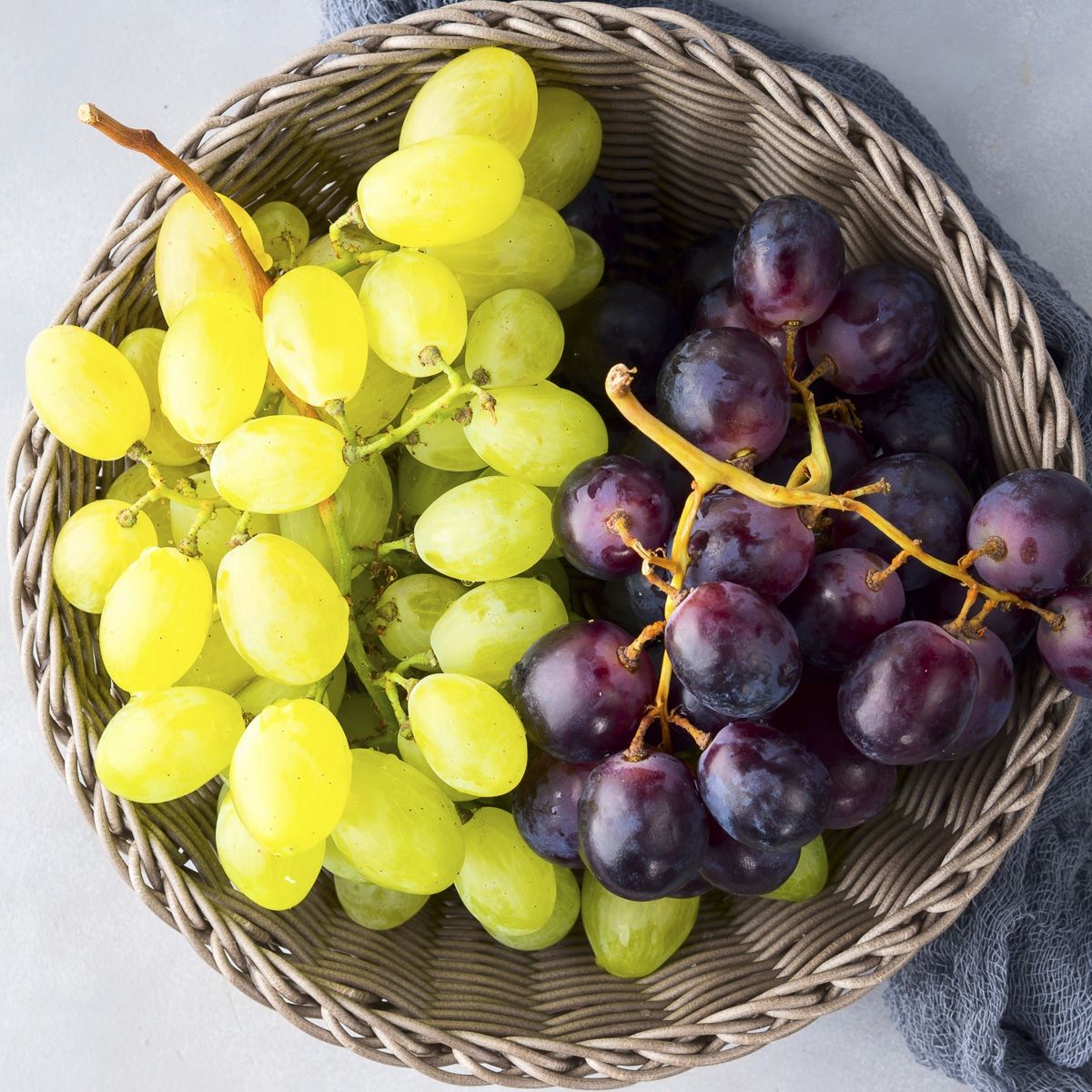
Once the grapes have been harvested, proper post-harvest care is crucial to ensure their longevity and maintain their quality.
Controlling Temperature and Humidity:
- Store grapes at a temperature of 32-35°F (0-2°C) to slow down ripening and extend shelf life.
- Maintain humidity level between 90-95% to prevent dehydration and mold growth.
- Optimal conditions help preserve flavor and texture while reducing spoilage.
Proper Packaging:
- Use perforated plastic bags or individual clamshell containers for storage.
- Perforations allow for adequate air circulation while maintaining moisture levels.
- Avoid tightly sealing containers to prevent the buildup of moisture, which can lead to mold growth.
Handle with Care:
- Handle grape clusters gently to prevent bruising or damaging the delicate fruit.
- Bruises can accelerate spoilage and affect the overall quality of the grapes.
- Place grapes in storage containers carefully to avoid crushing or compacting the fruit.
By following these steps, you can effectively store and preserve grapes, ensuring they remain fresh and flavorful for an extended period. Proper temperature and humidity control, along with gentle handling, are key factors in maintaining the quality of homegrown grapes.
(To be continued…)
Watch video for more information:
FAQ
How long can grapes be stored before they start to lose their quality?
Grapes can be stored for about 1-2 weeks before they start to lose their quality. However, certain varieties like Muscadine grapes can last up to 6-8 weeks if stored properly.
What is the best way to store grapes for longevity?
The best way to store grapes for longevity is to keep them unwashed and in their original packaging or a perforated plastic bag in the refrigerator. Make sure to remove any spoiled grapes to prevent them from affecting the rest of the bunch.
Can grapes be frozen for long-term storage?
Yes, grapes can be frozen for long-term storage. Simply wash and dry the grapes thoroughly, remove the stems, and place them in an airtight container or freezer bag. They can be kept in the freezer for up to 12 months.
How should I wash grapes before storing them?
It is recommended to wash grapes just before consuming them rather than before storing. Washing beforehand can increase moisture and potentially lead to spoilage. Rinse the grapes under cool running water and gently pat them dry with a paper towel.
Can I store grapes at room temperature?
Grapes are best stored in the refrigerator to maintain their quality. However, if you prefer to store them at room temperature, make sure to keep them in a cool and well-ventilated area away from direct sunlight. They should be consumed within a day or two.
Are there any special techniques to prevent grapes from getting moldy during storage?
To prevent grapes from getting moldy during storage, it is important to remove any damaged or spoiled grapes from the bunch. Additionally, ensure that the storage area is clean and well-ventilated. It is also helpful to separate individual grapes from the bunch, as mold can spread easily among them.
Can I store different grape varieties together?
It is generally recommended to store different grape varieties separately to maintain their distinct flavors and prevent cross-contamination. However, if storing them together, make sure to keep them in sealed containers or bags to avoid mingling flavors and aromas.
Are there any specific grapes that require different storage conditions?
Yes, Muscadine grapes are known to have a longer shelf life compared to other varieties. They can be stored at room temperature for a few days, but it is still recommended to refrigerate them for optimal freshness.
Can I store grapes with other fruits and vegetables?
While it is possible to store grapes with other fruits and vegetables, it is important to keep in mind that grapes are sensitive to ethylene gas, which is produced by some fruits and vegetables as they ripen. This gas can cause grapes to deteriorate faster, so it is generally best to store grapes separately.
How can I tell if grapes have gone bad?
You can tell if grapes have gone bad by inspecting them for mold, shriveling, or an off-putting smell. Discard any grapes that appear discolored, have a slimy texture, or show signs of spoilage.

Studied Agricultural Engineering-Plant Protection at University of California, Davis.
Head of Content writing team at Southelmontehydroponics.com

